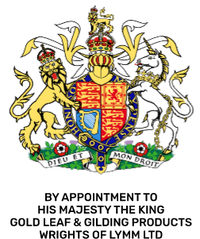Edible Gold Leaf Across the World - Croatia
- by sam@wrightsoflymm.co.uk User
Edible Gold Leaf Across Croatia: History, Uses & Local Terms
Croatia, with its rich culinary heritage and picturesque landscapes, has increasingly embraced the luxurious sparkle of edible gold. Whether it’s shimmering golden olive oil on the island of Krk or 24 carat gold-steak in Trogir, edible metals like gold leaf, goldleaf, gold flakes, gold dust, silver leaf, silver flakes, and silver dust now play a captivating role in Croatian gastronomy. Let’s explore the history, applications, and local vocabulary surrounding this glittering trend.
Ancient Origins & European Tradition
Edible gold’s story stretches back millennia. Ancient Egyptians used gold in food and purification rituals, believing in its divine and rejuvenating properties. During the European Middle Ages and Renaissance, gold leaf became a symbol of luxury in royal feasts. For example, in 1386, the Lord of Milan covered sturgeon, carp, ducks and partridges with goldleaf; in Venice by 1561, nuns even used edible gold to enrich “bussolai” biscuits. Although this isn’t uniquely Croatian, it sets the cultural stage for gold’s culinary elegance across the region.
Edible Gold in Croatia: From Olive Oil to Gold-Steak
Krk’s Golden Olive Oil
On Croatia’s northern island of Krk, olive oil producers made the metaphor literal—infusing bottles of olive oil with 24 carat gold leaf to create “golden olive oil.” The shimmering droplets don’t alter the taste but offer a luxurious visual and make for popular souvenirs. The producer sources edible goldleaf (certified, safe) locally and sells small bottles for around 70 kuna (around £8.21). Tourists love the sparkle and locals gift it for weddings and festive occasions.
Trogir’s 24 Carat Gold-Steak
On the Dalmatian coast in Trogir, the restaurant Coccolo became the first in Croatia to serve 24 carat gold leaf-encrusted steak. According to chef Roko Puče, the gold is certified as edible, odourless, slightly metallic tasting, and metabolically supportive (though primarily decorative). Prices vary—around 1,500 kuna (around £175.95) for a 250 g Argentine steak, up to 7,500 kuna (around £879.75) for a 1,200 g tomahawk—all plated under meticulous kitchen conditions using tweezers and delicate brushes to handle the fragile gold flakes.
Edible Gold: General Uses & Standards
-
Forms & Standards
Edible gold is biologically inert, tasteless, and safe—classified in the EU as food additive E 175. It’s commonly available as gold leaf, gold flakes, or gold dust, usually at 23 carat or 24 carat purity. Lower karat gold (alloyed) can be unsafe -
Culinary Applications
Globally, chefs use edible gold to garnish desserts, sushi, cocktails, chocolates, risotto, and even savoury dishes like the Hard Rock Café’s gold-leaf burger in the USA or Salt Bae’s gold-covered steak. -
Cultural Symbolism
Across cultures—from European courts to Japanese kinpaku and South Asian varak—gold and silver leaf symbolize opulence, divinity, and celebration. Though not yet deeply rooted in historical Croatian tradition, these global influences inform modern usage.
Local Terms for Gold and Silver Leaf in Croatia
While a detailed product-specific Croatian vocabulary isn’t widely documented, general Croatian translation patterns likely apply:
| English Term | Croatian Equivalent (approximate) |
|---|---|
| Gold leaf / goldleaf | zlatni listić or zlatni listić zlatolej |
| Gold flakes | zlatni listići or zlatni kosmiči |
| Gold dust | zlatni prah |
| Silver leaf | srebrni listić |
| Silver flakes | srebrni kosmiči |
| Silver dust | srebrni prah |
These follow consistent Croatian morphology analogously seen in neighbouring Slovenia, which uses terms like zlata lističa (gold leaf), zlati prah (gold dust), zlati kosmiči (gold flakes), and similar for silver. You’ll often find them labelled in specialty shops or culinary supply stores.
Modern Culinary Innovation & Celebration
-
Luxury Dining & Events
Edible gold leaf, gold flakes, and even silver dust are increasingly used in Croatian fine dining, weddings, and events—as seen in Krk and Trogir examples. -
Home Baking & Desserts
Although traditional Croatian sweets like paprenjak (a spiced honey-pepper biscuit) don’t historically feature gold or silver leaf, modern pastry chefs might add a touch of gold dust or silver flakes to festive treats for contemporary flair. -
Gift & Souvenir Market
Golden olive oil and other edible gold items serve as elegant, locally-themed gifts—perfect for destination weddings or high-end Croatian keepsakes.
Summary & Inspiration
Edible gold leaf—be it in the form of 24 carat or 23 carat gold leaf, gold flakes, gold dust, as well as silver leaf/flakes/dust—has journeyed from ancient rituals to modern Croatian luxury. Key highlights:
-
Krk’s golden olive oil offers a sparkling, edible souvenir.
-
Coccolo in Trogir serves up show-stopping gold-leafed steaks.
-
Standards like E 175 and purity (23–24 carat) ensure safety.
-
Local terms follow patterns like zlatni listić, zlatni prah, srebrni kosmiči.
-
Whether in fine-dining, baking, or gifting, edible gold continues to enchant.
Final Thought: Croatia may not have centuries of edible gold tradition—but its modern culinary scene is sparkling with opportunity. The next time someone pours golden olive oil or slices into a gold-edged steak, you’ll appreciate not just the luxury, but the craftsmanship, safety standards, and creative evolution that bring edible gold leaf to Croatian tables.






